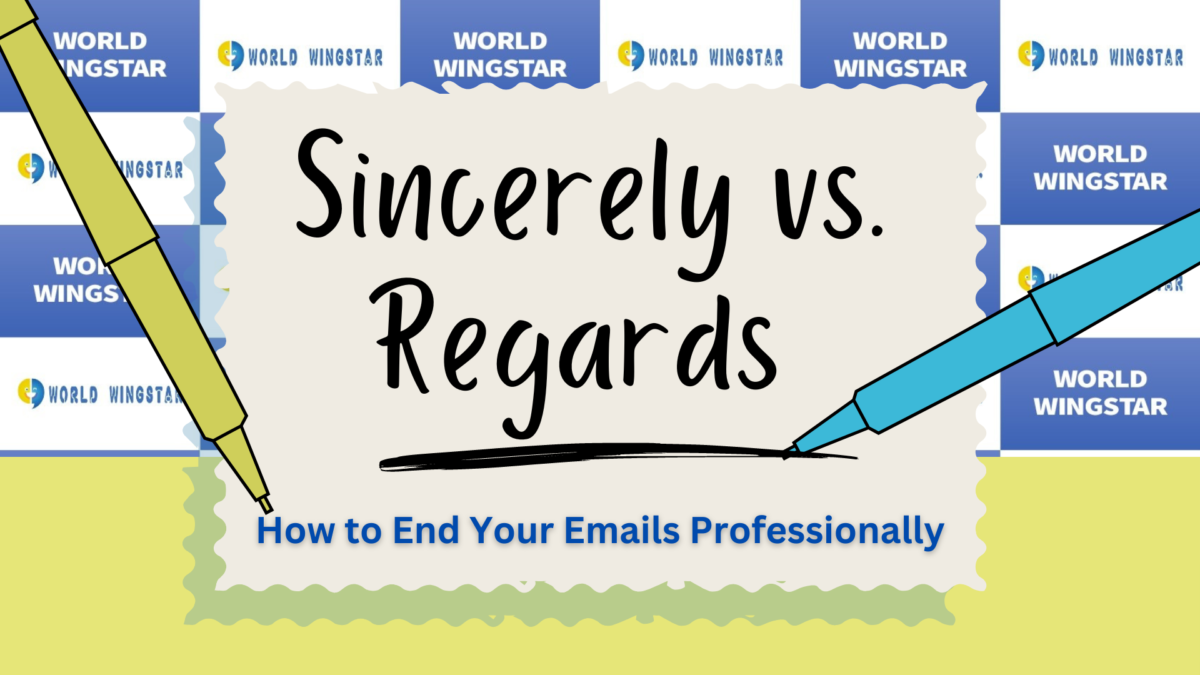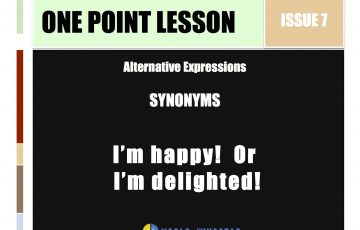- ワンポイントレッスン
Sincerely vs. Regards: How to End Your Emails Professionally メールをプロフェッショナルに締めくくる方法2024.09.24

英語でメールを書くことは、あなたが直面しなければならない課題の 1 つです。メールの結びの言葉は、メッセージの本文と同じくらい重要です。書き手を混乱させる可能性のある 2 つの一般的な結びの言葉は、「Sincerely」と「Regards」です。この記事では、Sincerely と Regards の適切な使い方について学びます。
Writing an email in English is one of the challenges every employee needs to face. Closing an email is just as important as the body of the message. Two common closings that can sometimes confuse the writers are “Sincerely” and “Regards.” In this post, we’ll learn about the proper usage of sincerely and regards.
1. Sincerely
Meaning and Usage: “Sincerely” is one of the most traditional and formal ways to close an email or letter. It conveys respect, professionalism, and a sense of honesty. When you use “Sincerely,” your message was written with genuine intent and that you value the recipient’s time.
When to use “Sincerely”:
In formal business communications
When writing to someone you haven’t met or don’t know well
In cover letters or job applications
When writing formal complaints or requests
Example:
Dear Hideki Takahiro san, Thank you for considering my application for the Production Manager position. I look forward to the opportunity to discuss how my skills can benefit your team.
Sincerely,
Mark Lee
Tone: Polite, formal, respectful
2. Regards
Meaning and Usage: “Regards” is a more neutral and versatile closing. It works well in both formal and semi-formal contexts but is slightly less rigid than “Sincerely.” There are also several variations, such as “Best regards” and “Kind regards,” which can soften the tone and add a personal touch.
When to use “Regards”:
In day-to-day business communications
When writing to colleagues, clients, or acquaintances
In emails where the relationship is established, the tone is more casual
Variations:
Best regards: More polite than “Regards” alone, it conveys a warm, professional tone.
Kind regards: Slightly more formal and conveys a caring, courteous tone.
Example:
Hi Akiko san, Thanks for sharing the report. I’ve added my comments and suggestions.
Best regards,
Mary Tan
Tone: Polite, semi-formal, friendly
WANT TO LEARN MORE ABOUT EMAIL WRITING?!
Learn Business English online with new and refreshing approach.
Visit our Homepage and CLICK on THE LINK to register https://book.world-wingstar.jp/entry/








